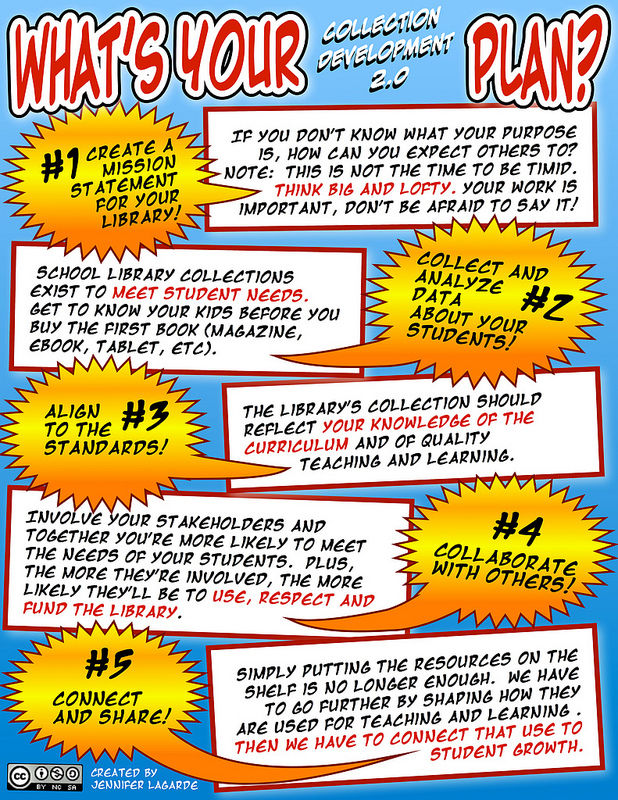Collection Development 2.0
- Jennifer LaGarde
- Apr 14, 2013
- 2 min read
I've been a super fan of Gwyneth Jones' fantastic comic tutorials (using the comic creator Comic Life) for a long time! And what's not to love?? Gwyneth's colorful, fun graphics are a great way to share information and learn new stuff. So... when I was tasked with creating a tutorial on how to create a "21st Century Collection Development Plan" for a group of NC librarians, a comic tutorial seemed like just what the doctor ordered.
Now... before I go any further, I want to go on record as saying that it's (past!) time to stop calling things "21st Century ______." If nothing else, we're already 13 years into this thing and I'm not sure any of us would call pedagogy for 10 years ago (also in the 21st century) cutting edge. I'm far more interested in pursuing methods and strategies that inspire learning and ignite passions in any century. Besides, since we're all teaching and learning in the 21st century, it just seems redundant to keep saying it. That said, Richard Byrne over at Free Tech for Teachers recently wrote about this topic so hop over there if you need further convincing.
Even so, I was excited to put together a tutorial for what I am calling "Collection Development 2.0." That is to say, a reboot of how we approach an important part of what goes on "behind the scenes" in every school library. As with all aspects of our work, developing an effective library collection has to be rooted in our goals for student learning: not starred reviews, not average copyright and not the gadget du jour.
Now... before you start that angry comment, let me clarify.
Yes... up to date resources are important. And yes... reviews are an important and effective tool for learning more about a title before purchasing it. HOWEVER, the most important thing to consider when deciding how to spend our limited funds has to be our kids. No matter what the purchase, we must be able to answer the following questions:
Are these resources directly aligned to my library's mission?
Were these resources selected based on what I know about my students?
Are these resources aligned with state and/or local curricula?
Am I confident that they will inspire learning or ignite student passions?
What plans do I have for how these resources will be used for teaching and learning?
How will I know if their use is successful?
How will I share this success?
This is a tall order, I know. What's more, it's hard work. But what's best for kids usually is.
So... yes, I'm excited to help some of my NC colleagues work towards these goals. And here's what I've come up with. Note - this is my first effort using Comic Life and if you compare my work to comic tutorial master, Gwyneth Jones, you'll be sorely disappointed.

That said, I don't think the tutorial tells the whole story, so I also created a companion Prezi that is, definitely, a work in progress. Over time, I'll be adding some images/examples to go along with the text, for now, it's a decent start.
As always, my work is licensed under creative commons, so feel free to use and share.





